#isabel de castro
Text





CASA DE LAVA, PEDRO COSTA [1995]
#casa de lava#pedro costa#great directors#heroes#portuguese film#cinema#movies#film#Pedro Hestnes#Inês de Medeiros#Isaach de Bankolé#Raul Andrade#Édith Scob#Isabel de Castro#Cape Verde#Emmanuel Machuel#Mount Fogo
26 notes
·
View notes
Photo










O SANGUE (Pedro Costa, 1989)
#o sangue#blood#la sangre#pedro costa#pedro hestnes#nuno ferreira#ines de medeiros#luis miguel cintra#canto e castro#isabel de castro#henrique viana#luis santos#manuel joao vieira#sara breia#jose eduardo#ana otero#pedro miguel#miguel fernandes#film#cine
14 notes
·
View notes
Text
👉 "Habría ido al escrache a Olona"
👉 “Habría ido al escrache a Olona”
Es miércoles por la mañana en el Centro de Alto Rendimiento, un oasis deportivo enclavado en plena Ciudad Universitaria madrileña. Será una de las pocas veces que Roberto Sotomayor (Madrid, 1977) haya pisado una pista de atletismo en chaqueta y zapatos. Quizás en algún cóctel o entrega de premios, en algún evento. Los chavales a los que saluda, sin camiseta y sudorosos bajo un sol de justicia,…

View On WordPress
#Atletismo#ayuntamiento de madrid#Fidel Castro#Isabel Díaz Ayuso#jose luis martinez almeida#Julio Anguita#pablo iglesias#podemos#Política#Reportajes
0 notes
Photo
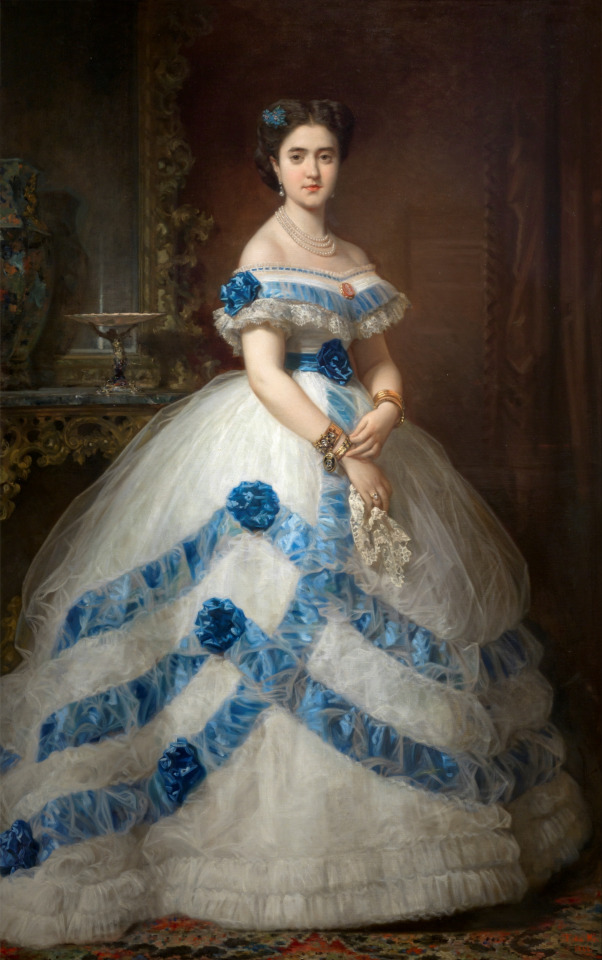
Federico de Madrazo y Kuntz (Spanish, 1815-1894)
Isabel Álvarez Montes, 2nd Marchioness of Valderas and 2nd Duchess of Castro Enríquez, 1868
Museo Del Prado
#art#fine art#fine arts#classical art#female portrait#spanish art#european art#women in art#marchioness#duchess#Aristocracy#aristocrat#european#europe#europa#spain#spanish#spanish noble#oil painting#traditional art#Isabel Álvarez Montes#western civilization#Federico de Madrazo#Federico de Madrazo y Kuntz#1800s#1800s fashion
149 notes
·
View notes
Text
4 portuguese monarchs who might had same-sex relationships:
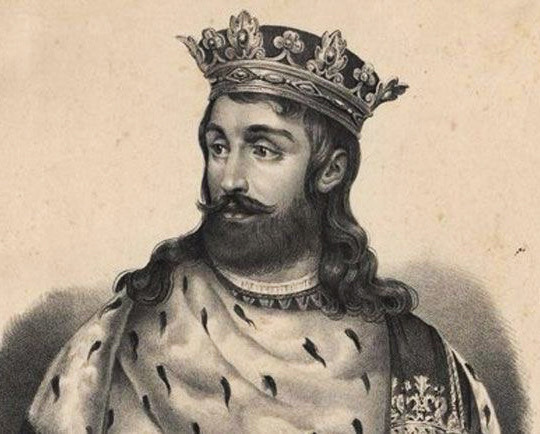
1) Pedro I of of Portugal, certainly, one if the most renowned portuguese monarchs, largely due to the saga of “love and passion” with Inês de Castro. Yet, it was common knowledge that she was the the Pedro’s only love: he harboured a passion for his squire, Afonso Moreira, a relationship that ended as disastrously as his other romantic (or not) entanglements. On one fateful occasion, Afonso was caught in bed with Catarina Tosse, wife of Lourenço Gonçalves, who was an esteemed magistrate.
Throughout his reign, Pedro earned the epithet “the Cruel” for his ruthless administration of justice, whereby transgressions of any magnitude often resulted in swift execution. Pedro’s decision to order Afonso’s castration as punishment for his adultery starkly manifested his merciless ethos. Nevertheless, according to Fernão Lopes, a chronicler of portuguese court at the time, in chapter VIII of “Crônica de el-rei D. Pedro I”, his harshness stemmed from a surge of jealousy on the king’s part upon discovering his beloved squire’s relationship with a woman.
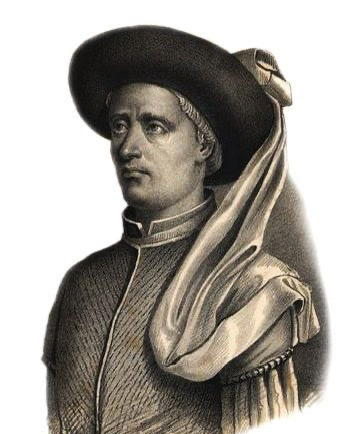
2) Prince Henry, revered as “the Navigator”, occupies a central role particularly during the epoch of maritime exploration.
He was hailed as “chaste prince”, having never entered into wedlock, with no historical accounts suggesting (with certainty) any relationships with women. In the annals of 1444, Henry experienced the loss of a “dear friend” in Ceuta, a tragedy that pluged him into 3 months of profound mourning. Both his father, King John I, and his brother, King Edward, counselled him to “rein in his emotions, lest he indulge men beyond what virtue dictates.”
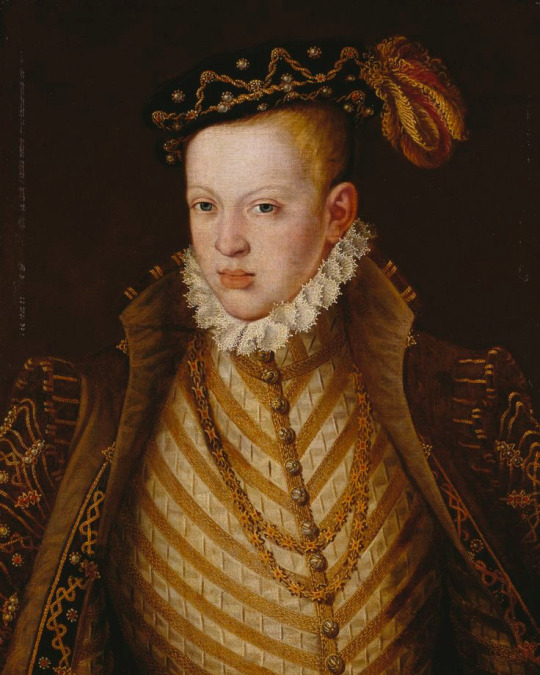
3) King Sebastian contracted gonorrhoea at the age 10/11, a malady documented in medical records at the time that rendered him sexually impotent. Some historians posit that this affliction may have dissuaded Sebastian from pursuing matrimonial unions or romantic relationships with women.
Even though, the “Crônicas de el-rei D. Sebastião” by Friar Bernardo da Cruz recounts an incident during a hunt in the Alentejo, where the entourage of nobles accompanying King Sebastian were stirred by a commotion. Investigating the disturbance, they stumbled upon the monarch locked in an embrance with a fugitive slave amidst the woodland.

4) King Afonso VI, sibling to Queen Catarina of Braganza, earned a reputation for rebeliouness and unruliness from a tender age, yet he harboured no ambitions for kingship.
His reign , marred by a series of missteps, was etched in history for its futile ventures. Despite grappling with severe health afflictions — such as partial paralysis stemming from hemiplegic fever, and scourge of bulimia — Afonso found solace in nocturnal escapades with his inner circle of friends. Among them was António Conti, an intalian peddler of opulent attire and accoutrements to Europe’s nobility. Conti’s sway in Afonso’s court burgeoned as he assumed the role of sartorial advisor and facilitator of introductions to foreign luminaries. Also, both grew increasingly closer to esch other, with Afonso avoiding royal gatherings to spend time with Conti, mostly in his chambers.
In 1666, Afonso took the hand of Maria Francisca Isabel of Savoy, yet their union was fleeting. Maria, citing non-consummation owing to Afonso’s hemiplegia, sought an annulment. In letters to his sister, he bemoaned Maria’s coercive measures, by which she compelled him into relationships with 14 courtesants in a bid to unearth the root of their marital discord.
Seeking to shield Afonso’s sovereignty and secure the portuguese lineage, Luisa de Gusmão, his mother, sanctioned the arrest and subsequent exile of Conti to the distant shores of Brazil.
#i am sorry for how long it is#but i really wanted to post it#so there you have#theres other monarchs to talk about#but these are the ones with the most evidences#pedro i of portugal#prince henry#king sebastian#afonso vi of portugal#historical facts#portugal
12 notes
·
View notes
Text

Le "Real Gabinete Português de Leitura" est une bibliothèque du centre de Rio de Janeiro, au Brésil. Ce temple de la lecture possède la plus grande collection de littérature portugaise en dehors du Portugal. L'institution a été fondée en 1837 par quarante-trois immigrants portugais réfugiés politiques, afin de promouvoir la culture au sein de l'empire du Brésil. Le bâtiment, conçu par l'architecte portugais Rafael da Silva e Castro, a été érigé entre 1880 et 1887 dans un style néo-manuélin. Ce style architectural évoque le style gothique-Renaissance exubérant en vigueur à l'époque des découvertes portugaises, nommé manuélin au Portugal pour avoir coïncidé avec le règne du roi Manuel (1495-1521). L'empereur Pedro II (1831-1889) a posé la première pierre de l'édifice le 10 juin 1880, et sa fille, Isabel, princesse impériale du Brésil, ainsi que son mari, le prince Gaston, comte d'Eu, l'ont inauguré le 10 septembre 1887.
29 notes
·
View notes
Text
Tagged by @goldslick (thank you, Drew!) and later @britneyshakespeare (thank you, Diana!)
Tag nine people you’d like to know better…
Last song to which I’ve listened: Rupture au Miroir, performed by Jane Birkin and Isabelle Adjani (lyrics by Gainsbourg, I believe). Anyone who follows this blog will have learned by now (if only from my relentless in memoriam posting) that the iconic Jane B passed away this Sunday, and I feel devastated (I don’t think a celebrity death has crushed me quite this much since Anita Pallenberg in 2017). So, naturally, I spent the entire day revisiting Jane’s catalog.
Currently watching: Since I first got tagged in this, season 5 of What We Do in the Shadows premiered on Fox, so I’m watching that as it airs! Maybe it’s just because I’m a Matt Berry devotée, but I think it’s one of the most amusing things on tv right now, though I understand some may find it too silly. Oh, and yesterday I watched Charlotte Gainsbourg and Agnès Varda’s documentaries on Jane Birkin!
Currently reading: Chega de Saudade - A História e as Histórias da Bossa Nova, by Ruy Castro. It’s a history of bossa nova music, its composers, performers and champions, by one of Rio’s greatest culture writers. I would recommend it to anyone with an interest in the genre, but sadly I don’t know if it’s been translated into English. Oh, and a book of selected essays by Walter Benjamin.
Current obsession: Goodness, I always have at least a few of them at any given time; some permanent, some temporary. As I mentioned, losing Jane B has revived my decade-long fascination with her life and work, and, by extension, with the Serge Gainsbourg songbook (say what you will about the man, but he did have a way with words - and music). Besides that, anyone who follows me on my non-60s alt (@fightingvainlytheoldennui , for anyone interested in my “off-the-walls, whateverIwant posting”, as Diana so accurately put it) will also be aware of my ongoing enthusiasm for HBO’s hit series Succession.
Well, this turned out way too long, as it tends to happen when I partake in tag games. But I had a fun time answering, and I hope you guys will too!
I’m tagging @fancycolours, @sneez, @satisfactory-dreams, @coolstreetbubba, @bbbrianjones, @breakaway1975, @david-watts, @chaoticdesertdweller , and @m-faithfull (if they feel like answering) and also anyone else who’d like to do this :)
#thanks again to the mutuals who tagged me this was fun#tag game#apologies for turning all of those simple prompts into essay questions btw#i have a tendency for dissertation
22 notes
·
View notes
Text
Fetiche Sonoro: The 40 Best Songs of 2023
These are the 40 best songs of the year:
1. Los mejores - Alizzz
2. Lejos - Andrea Cruz
3. De Quererte Tanto (Guajira y Cabal) - Anna Colom & Exequiel Coria
4. Los Perros - Arde Bogotá
5. Patio - Asia Menor
6. Olas y Arenas - Balún & La Brega
7. Nadie Me Ha Preguntado - Belén Aguilera
8. Au Revoir à la Merchandant - Bronquio & 41V1L
9. Duérmete Clavel - Budaya
10. Ardió Tu Pelo - Crudo Pimento
11. Baño De Luna - Debi Nova
12. Daniboy - Diamante Eléctrico
13. Para Vivir - El Kanka & Silvana Estrada
14. Sin Voz - Florencia Lira
15. Daydreaming - Foudeqush
16. Nada Para Ti - Francisca Valenzuela & Ximena Sariñana
17. Mentingitis - FraXu
18. El Final - Hello Seahorse!
19. Penetración - Isabel Do Diego
20. Ke Será De Mí - Jaze
21. Último Round - La Vida Bohème
22. Ein Sof, Infinito - Lido Pimienta
23. Si Tú Me Quieres - Maika Makovski (featuring Ovidi Tormo)
24. Rueda, Rueda - María José Llergo
25. Bang - Melenas
26. Casta Diva - Mon Laferte
27. Se Dio Así - Muyaio & Tronco
28. Pequeñas Esperanzas - Niña Tormenta
29. Porque Yo - Pahua (featuring Eva de Marce)
30. Patio de Adelante - Playa Gótica
31. Máquina Culona - Ralphie Choo & Mura Masa
32. No Me Digas Qué Hacer - Renee
33. Cómplices - Reno Rojas
34. Problema Cabrón - Residente & Wos
35. Tú y Yo - Reyko
36. LLYLM - Rosalía
37. Tu Olor - Rubio
38. Madres - Sofia Kourtesis
39. La Raíz - Valeria Castro
40. Dibujos De Mi Alma - Y La Bamba
#en español#latin america#alternative music#indie pop#spain#mexico#new music#best songs#mejores canciones#spanish language#hello seahorse!#rosalía#silvana estrada#y la bamba#sofia kourtesis#mon laferte#maría josé llergo#lido pimienta#arde bogotá#colombia#perú#argentina#residente#puerto rico#Spotify
8 notes
·
View notes
Text

✵ May 13, 1995 ✵
Isabel Inês Castro Curvello de Herédia & Duarte Pio, Duke of Braganza
2 notes
·
View notes
Text




IMAGENES Y DATOS INTERESANTES DEL DIA 19 DE FEBRERO DE 2024
Día Internacional Contra la Homofobia en el Fútbol, Año Internacional de los Camélidos.
Santa Belina, San Álvaro, San Álvaro y San Gabino.
Tal día como hoy en el año 2008
Fidel Castro, comandante y líder de la revolución cubana que le llevó al poder en 1959, anuncia a través del diario oficial "Granma" que deja la presidencia de Cuba. (Hace 16 años)
1945
Durante la II Guerra Mundial tiene lugar el primer desembarco americano en territorio japonés en la isla de Iwo Jima, situada a unos 1.200 km al sur de Tokio. El 26 de marzo, tras una feroz y enconada resistencia japonesa, lograrán conquistar la isla y controlar sus estratégicos campos de aviación. (Hace 79 años)
1942
En el marco de la II Guerra Mundial, el presidente de los EE.UU. Franklin D. Roosevelt firma la orden ejecutiva que permite internar en campos de concentración a los japoneses americanos. Para muchos de ellos comenzará así un auténtico y cruel calvario, al ser vistos con recelo por sus propios vecinos. (Hace 82 años)
1881
Kansas se convierte en el primer estado americano que prohíbe la fabricación, venta o transporte de bebidas alcohólicas en su constitución estatal, con el fin de obtener la abstinencia total o parcial. (Hace 143 años)
1861
En Rusia, Alejandro Nicolaiévich, primogénito y sucesor de Nicolás I, tras haber emancipado hace poco a los siervos de la familia real, acción que le ha valido el sobrenombre de "zar libertador", promulga en el día de hoy un "úkasse" (decreto) por el que se extiende esta medida liberadora a todos los siervos del imperio ruso, venciendo de esta manera la fuerte oposición de la nobleza terrateniente. A pesar de ello, en muchas aldeas se producirán rebeliones de campesinos protestando por las nuevas obligaciones establecidas en el decreto respecto al pago que deberán hacer a los terratenientes en los próximos nueve años para obtener las tierras que consideran propias, ya que las vienen trabajando desde hace varias generaciones. (Hace 163 años)
1836
En España, el Presidente del Gobierno Juan Álvarez Mendizábal, decreta la conocida como "Desamortización de Mendizábal", mediante la cual se pasarán las propiedades improductivas en poder de la Iglesia y las órdenes religiosas a manos de la oligarquía terrateniente. Mendizábal no podrá gestionar el proyecto pues la reina gobernadora Isabel II le depondrá el 15 de mayo de 1836, menos de un año después de su llegada al poder, con lo que, el procedimiento que se seguirá para evitar que las propiedades pasen al pueblo será subastarlas en grandes bloques que los pequeños propietarios no podrán costear, evitando así la formación de una clase media o burguesía que realmente enriqueciera el país y no siguieran los oligarcas detentando latifundios improductivos. La intención de Mendizábal hubiera sido que estas tierras pasarán a manos del pueblo. Mendizábal volverá a ser ministro de Hacienda con Calatrava, después de la Revolución de 1836. La Iglesia decide excomulgar a los expropiadores y a los compradores de las tierras. En otros países se llevan a cabo medidas similares. (Hace 188 años)
197
En la actual Lyon (Francia) tiene lugar la batalla de Lugdunum entre los ejércitos del emperador romano Septimio Severo y del pretendiente Clodio Albino. Se considera el más grande, cruel y sangriento de todos los enfrentamientos entre las fuerzas romanas. Al final de la misma, la victoria de Severo lo dejará como el único emperador del Imperio romano. (Hace 1827 años)
2 notes
·
View notes
Text



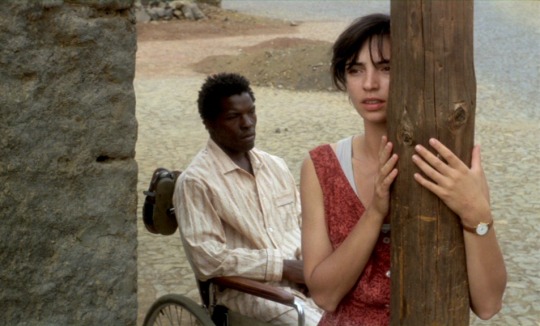


CASA DE LAVA, PEDRO COSTA [1995]
stills by FILMGRAB
#casa de lava#pedro costa#great directors#heroes#portuguese film#cinema#movies#film#Pedro Hestnes#Inês de Medeiros#Isaach de Bankolé#Raul Andrade#Édith Scob#Isabel de Castro#Cape Verde#Emmanuel Machuel#Mount Fogo
17 notes
·
View notes
Photo
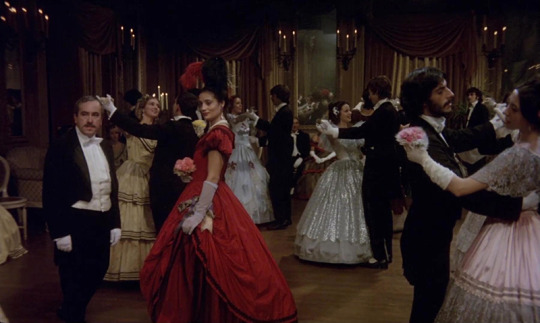






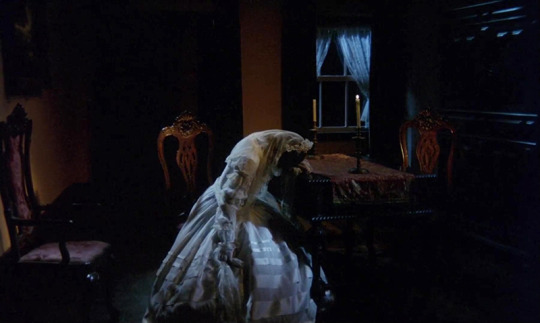


FRANCISCA (Manoel de Oliveira, 1981)
“Nada corrompe la fatalidad”
#francisca#manoel de oliveira#teresa menezes#diogo doria#mario barroso#manuela de freitas#rui mendes#francisco bras#isabel de castro#duarte de almeida#nuno carinhas#alexandre brandao de melo#gloria de matos#film#cine
28 notes
·
View notes
Text



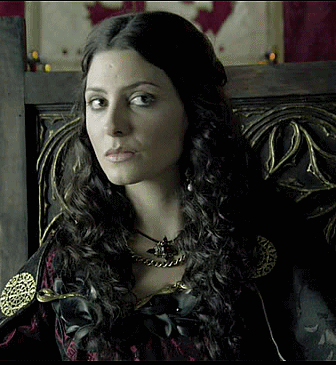
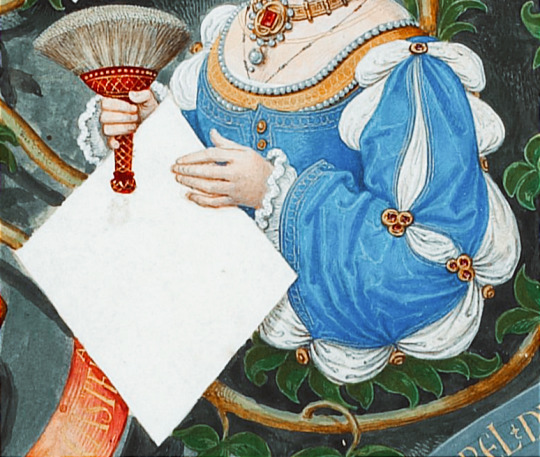
Juana of Portugal (1439-1475)
She was the posthumous daughter of King Duarte of Portugal and his wife Leonor of Aragon. Juana grew up in exile with her mother, due to the intrigues of the Portuguese court, and lived first at the Monastery of Santa María in Medina del Campo and later in Toledo, where Leonor of Aragon died. At the age of six, Juana returned to the Portuguese court of her brother Afonso V.
In 1455 the young Juana married her cousin Enrique IV of Castile, who had repudiated his first consort after thirteen years of marriage. The couple produced no children. The marriage was annulled on the grounds of an impotence that was specific rather than general, an impotence that applied only to Enrique’s relationship with Blanca of Navarre. Yet such an extraordinary explanation amounted to a case of maleficium (spell), with the clear implication that Blanca was the guilty party, and in addition she was obliged to leave Castile and return to Navarre.

Juana of Portugal was described as beautiful, cheerful and coquettish. The sources speak of the licentiousness introduced by the young Queen and her ladies in the austere Castilian court. They liked to use perfums, makeups, dresses that displayed too much décolletage, and flirting with men. One of her ladies, Guiomar de Castro, was King’s mistress, causing the anger of the Queen, and other, Mencía de Lemos, was Cardinal Mendoza’s mistress.
Six years after her wedding, Queen Juana was pregnant. Some say it was a miracle, others that it was the result of some sort of artificial insemination that the couple had tried, as was recorded by a german traveler. During this period, Juana insisted that Enrique's teenaged brother and sister, Alfonso and Isabel, forcefully be brought to the court and away from their sick mother. Many saw this as a way of making sure her daughter's path to the crown would encounter no obstacles. The Queen gave birth to a daughter named Juana, officially proclaimed heir to the Crown of Castile and created Princess of Asturias.
Queen Juana planned the marriage between her sister-in-law, Isabel of Castile, and her brother Afonso V of Portugal, and her daughter with her nephew Prince Joao. She wanted with these weddings an annexation of the Crown of Castile with the kingdom of Portugal.
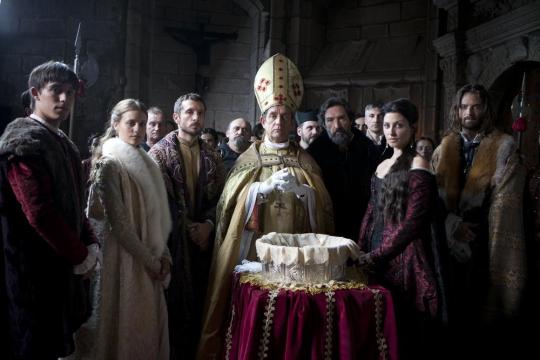
In early 1460s, Castilian nobles became dissatisfied with the rule of Enrique IV, and believed that Princess Juana was not King’s daughter. They called her la Beltraneja, a mocking reference to her supposed illegitimacy. Propaganda and rumour encouraged by the league of rebellious nobles argued that her father was Beltrán de la Cueva, a royal favorite of low background who had been elevated to enormous power by Enrique and who, by some, has been suggested as Enrique's lover.
Many nobles refused to recognise Princess Juana and preferred that Enrique instead name his younger half-brother, Alfonso as his heir. This was agreed to on the condition that Alfonso marries little Juana. Not long after this, Enrique reneged on his promise and began to support his daughter's claim once more. The nobles in league against him conducted a ceremonial deposition-in-effigy of Enrique outside the city of Avila and crowned Alfonso as a rival king.

Queen Juana and her daughter were removed from the court. They lived in various castles as hostages, separately or together, protected by a faction of the nobility. The love affair of Queen Juana with the Bishop Fonseca’s nephew, Pedro of Castile, and the birth of her two illegitimate sons, caused great scandal. As a result of the need to conceal the pregnancy of her illegitimate sons, Juana of Portugal is considered the inventor of the farthingale.
In 1468, Alfonso of Castile died and Princess Juana was stripped of her succession-rights. Her aunt, Infanta Isabel, was placed before her, on condition that Isabel marry a man chosen out by the monarch. Queen Juana and her daughter sent a formal appeal to the Supreme Pontiff. Enrique accepted to divorce his wife and send her to Portugal, but Juana remained in Castile as king's wife, though separated of her husband. Isabel married Fernando of Aragon with the opposition of Enrique IV.
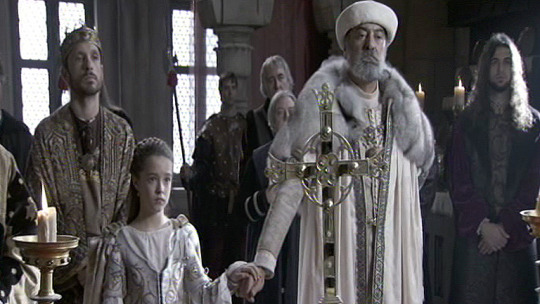
In 1470, Princess Juana was engaged and then married by proxy to the Duke of Guienne, brother of Louis XI of France. In the face of the French ambassador, King Enrique and Queen Juana swore before a crucifix that the Princess was their legitimate daughter. The French marriage never consummated, because the duke died two years later in France. Queen Juana always defended her daughter’s rights to the throne, and she had an active political participation. Queen Juana tried to get the support of nobles and cities, but with meager success and without palpable results. In 1474, Enrique IV died at the Alcázar of Madrid and rumors circulated that the late monarch had been poisoned, his wife and his daughter demanded an investigation. Queen Juana died a few months after her husband’s death at the age of 36. In the last months of her life, she lived at the convent of San Francisco in Madrid. The cause of her death is unknown.
Bárbara Lennie played Juana of Portugal in TV series "Isabel"
#juana de portugal#juana de avis#joan of portugal#women in history#spanish history#barbara lennie#Isabel tve#enrique IV#juana la beltranejs#juana de trastamara#juana de castilla
24 notes
·
View notes
Text
Valentine Schlegel & Iris Murdoch

El pasado entierra al pasado y debe terminar en silencio, pero puede ser un silencio consciente, que permanece con los ojos abiertos
- Iris Murdoch, El mar, el mar. De Bolsillo 2005. Traductor: Marta Isabel Gustavino Castro.
- Jeanne MOREAU y Valentine SCHLEGEL en 1968, frente a la chimenea realizada por Valentine en el piso de Jeanne.Fuente : "Valentine SCHLEGEL : je dors, je travaille", por Hélène BERTIN.
10 notes
·
View notes
Video
vimeo
El desayuno (Film, short version) - Miguel Casco from Miguel Ángel Casco on Vimeo.
Largometraje / Performance / Videoarte
Miguel Casco en colaboración con Hekatombe Producción Artística
Catorce personas habitan su propia piel para atestiguar el amanecer y compartir sus cuerpxs mientras el sol naciente ilumina el espacio. La interacción se suscita entre ellxs y la premisa principal es celebrar la vida, honrar la libertad y el disfrute. El Desayuno invita a abrazar la desnudez y entrar en sintonía con la naturaleza.
miguelcasco.com
D I R E C C I Ó N
Miguel Casco
D I R E C C I Ó N E S C É N I C A
Andrea Garay
D I R E C C I Ó N C O R E O G R Á F I C A
Sebastián Santamaría
D I R E C C I Ó N E J E C U T I V A
Catalina Navarrete
R E P A R T O
Mar Castañedo
Mónica Colin
Marlene Coronel
Mariana Domenech
Jimena González
Aileen Kent
Carlos Nunez
José Francisco Ordóñez
Luis Ortega
José Ortiz
Baruk Serna
V I D E O
Alan Espinosa
Erik Jonguitud
Michel Trevilla
F O T O G R A F Í A
Alejandra Edwards
David Flores Rubio
M Ú S I C A
Sebastián Lechuga (Intro, Oscuridad, Ofrenda y Desayuno)
Alejandro Preisser (Locura, Descenso, Claridad y Outro)
E D I C I Ó N D E V I D E O
Miguel Casco
Erik Jonguitud
D I S E Ñ O F L O R A L
Alejandra Velasco
M U S I C A L I Z A C I Ó N E N V I V O
Jail Less
E Q U I P O T É C N I C O
Humberto C. Cáceres
Heber Leonidez
Elena Manero
Ehécatl Moreno
María Naidich
Alfonso Pérez
Yair Ramírez
P R O Y E C T O R E A L I Z A D O C O N E L A P O Y O D E
Etna M. Arroyo, Jacobo M. Casco, Patricia Almada, Luis Antonio Garay, Elsa Hernández, Carlos Navarrete, Rocio Barajas, Carlos Santamaría, José María Macías, Andrés Castañeda, César Meza, Enrique Ajuria, Susana Tovar, Valeria Casco, Luis Antonio Casco, Heleni Castro, Óliver Victoria, Andrea Ayala, Andrea Anderson, Indira Zamora, Roberto González, Andrés Piña, Rafael Hernández, David C. Parra, Youtaek Hwang, Eduardo Palacio, Remi Cárdenas, Rogelio Toledo, Ross Romero, Isabella de la Mora, Tabaré Arroyo, Yair Ramírez, Luis Almada, Omar Cobos, Silvana Larrea, Raffaela Schiavon, Isabel Vieitez, Rebeca Zequera, Leonardo Galicia, Mark Feldmann, Francisco Saldívar, José Francisco Ordóñez, Neil Haidorfer, Bárbara Huerta, Adriana Degetau, Tere Sáenz, Chloe Estes, Fernando Almazán, Gina Guzmán, Mariano Nava, Rubén Ojeda, Diego Ortiz, Santi San Martin, Carlos Santamaría Barajas, José Funcia, Malimna Etnegorozka, Pablo P. Caro, Gabriela Chávez, Gabriel Picazo, Rubén Torres, Roberto Praxedis, Luis Pérez, Jeannette Betancourt, Elena Manero, Ma. Ceci Cuesta, Humberto Schiavon, Celeste Bejarano, Mario Montes & David Martínez.
13 notes
·
View notes